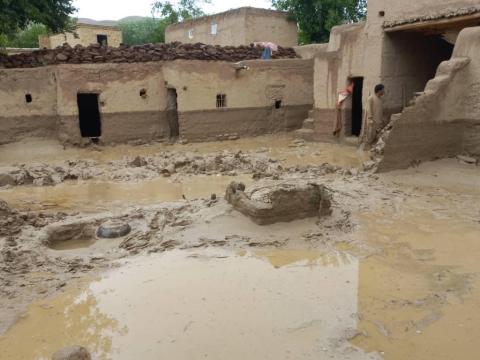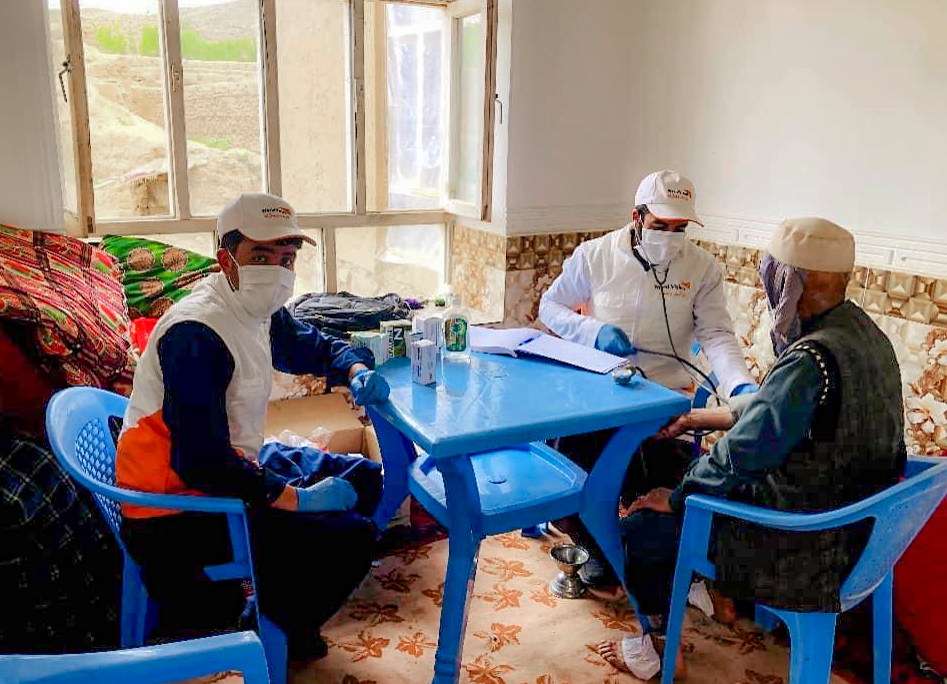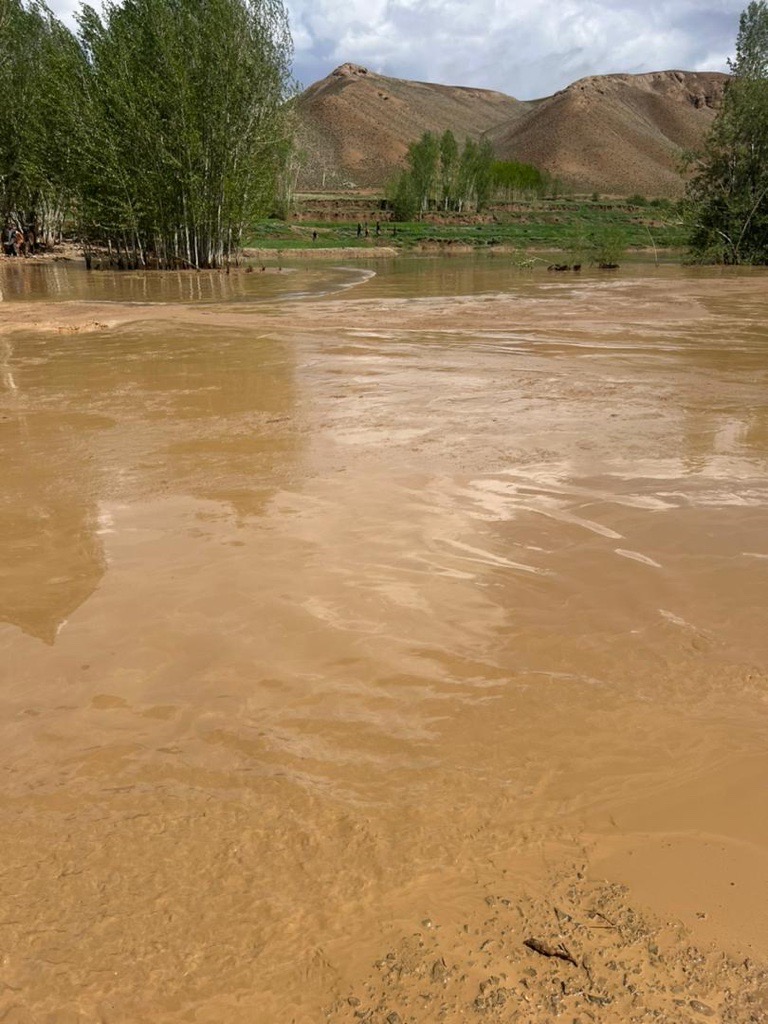Afghanistan's Climate Crisis: Floods

Yosuf, a resident of Ghor province, is one of approximately 500,000 people affected by floods in Afghanistan in May 2024. As rivers rose and burst their banks, rocks and debris beneath the surface of the water, traveled at deadly speed – hundreds have been killed due to this and other direct effects of the floods. Yosuf was fortunate, having sustained injuries to his feet but able to escape the worst. World Vision Afghanistan's healthcare team offered him, and his family members including his children, mental health and psychosocial support assistance and dressed their wounds.  To support him feed his family, including his 13 children, World Vision Afghanistan also offered him food assistance.
To support him feed his family, including his 13 children, World Vision Afghanistan also offered him food assistance.
While Yosuf's wounds will heal, he has concerns about his family's future, as they have lost everything to the flood. Afghanistan stands as one of the world's most vulnerable and least prepared countries when it comes to climate-related shocks. It is ironic that these floods follow four years in which the country has grappled with drought, severely impacting the income and food security of its people. With 79 percent of the population relying on agriculture, the absence of water means a loss of income and insufficient food to sustain families. Between November 2023 and March 2024, an estimated 15.8 million individuals faced acute food insecurity, with drought serving as a major contributor.
Moreover, floods can be made worse where the soil is dry and lacks vegetation. Since May 16th, a swathe of the country has been ravaged by the floods, with heavy rain moving from the east towards the western and northern provinces, including those where World Vision Afghanistan operates (Herat, Badghis, Faryab, Ghor). Tens of thousands of Afghans have been affected in recent weeks, resulting in economic losses and profound human suffering. Many families have endured the loss of loved ones, homes, agricultural lands, and livelihoods. 
The situation in these flood-affected regions remains critical and demands urgent humanitarian aid to address immediate needs. Clean drinking water, shelter, food assistance, child and vulnerable adult protection, hygiene kits, and accessible healthcare—including mental health and psychosocial support (MHPSS)—are among the most pressing requirements.
WV Afghanistan has ongoing programmes in the four affected provinces, with teams on the ground since the onset of the disaster. They have been providing healthcare support, including MHPSS, multi-purpose cash assistance, tents, non-food items (NFIs), and emergency hygiene and dignity kits.
Thousands of families across the country share the same plight as Yosuf’s family, having lost everything and requiring immediate and long-term assistance to rebuild their lives. Yosuf had a house, several acres of agricultural land, and livestock including four sheep and one cow, but nothing is left now. Flood swept them all away. "My possessions were swept away by the floods," Yosuf added. "We are in dire need of assistance."
Humanitarian relief, however, won’t be enough. As part of preventive measures against such shocks, WV Afghanistan has undertaken projects to protect communities from climate-related disasters, such as constructing gabion walls in the Gholran District of Herat Province. This kind of longer-term thinking is vital if Afghanistan is going to withstand future shocks and flourish despite the challenges it faces.